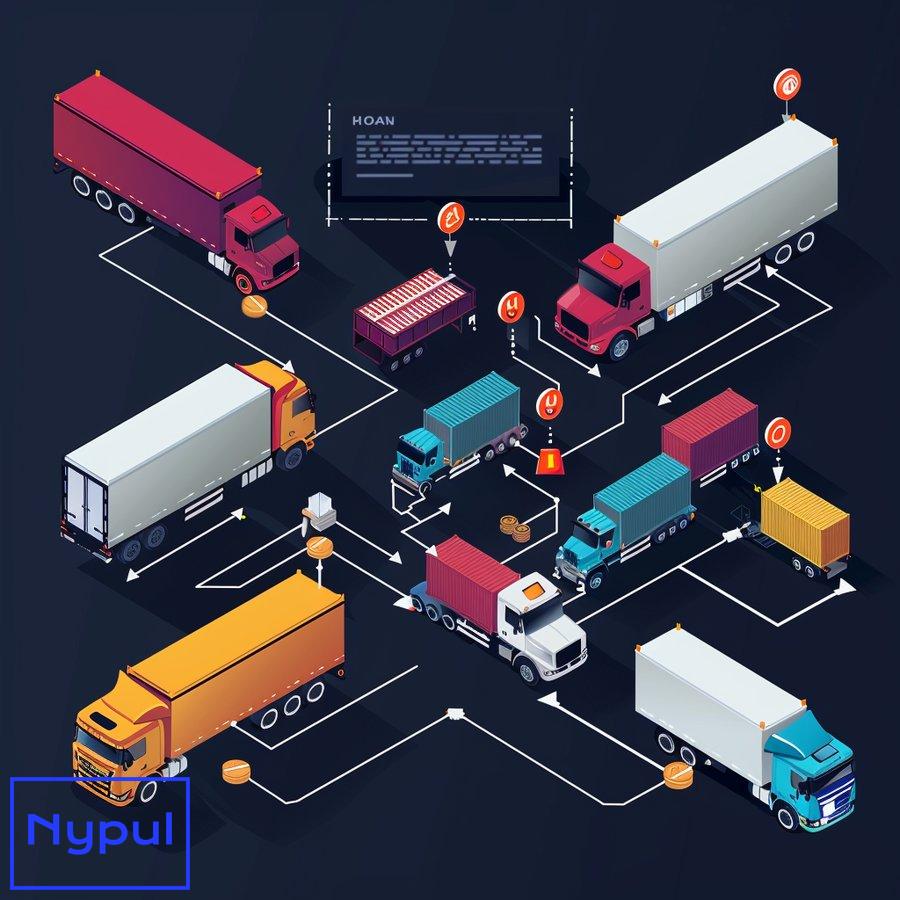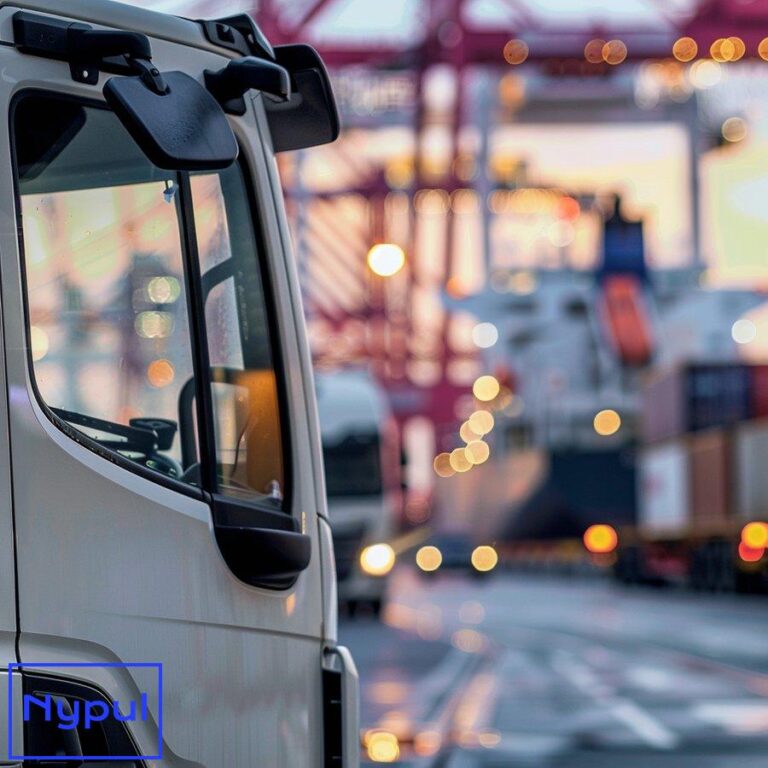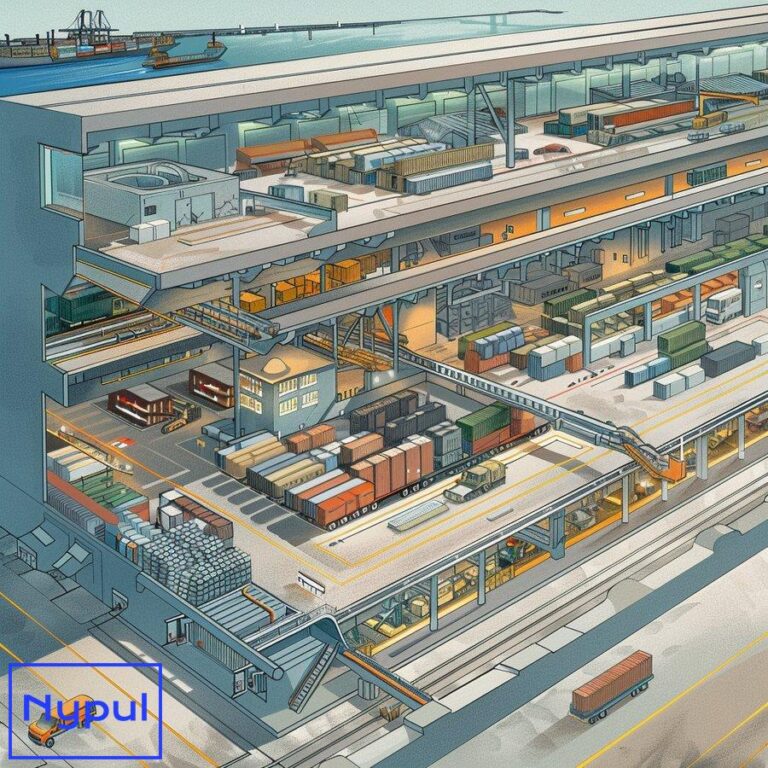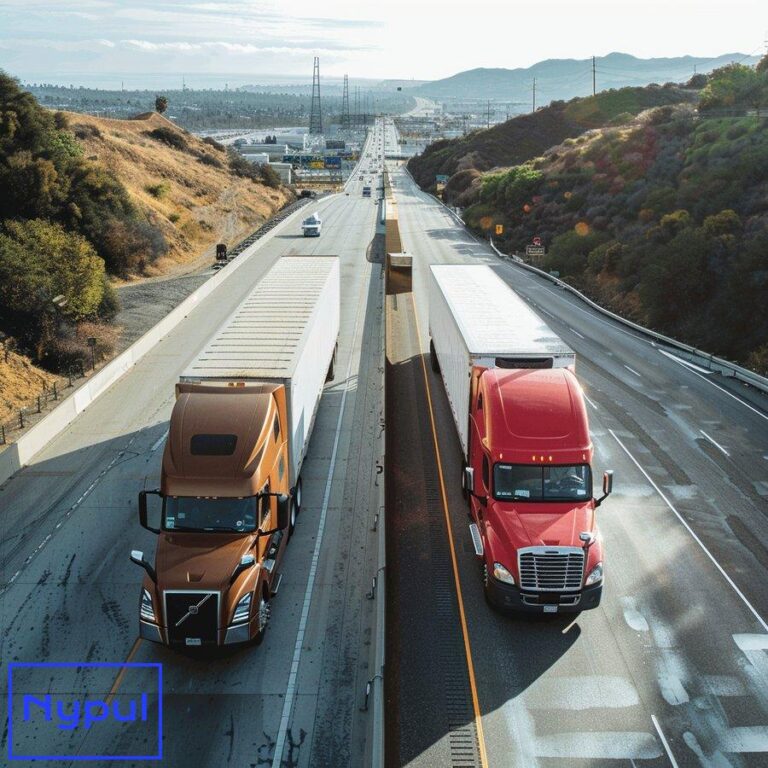Is Intermodal Trucking Slowing Down
What is the current state of intermodal trucking?
Intermodal trucking, a vital component of the global supply chain, has been experiencing a slowdown in recent years. This transportation method, which involves the movement of freight using multiple modes such as trucks, trains, and ships, has faced numerous challenges that have impacted its efficiency and speed.


In 2024, the intermodal trucking industry is grappling with a combination of economic, infrastructure, labor, and regulatory factors that have contributed to a decrease in overall performance. Despite the continued growth in global trade and the increasing demand for goods, intermodal trucking has struggled to keep pace with these changes.
One of the primary indicators of the current state of intermodal trucking is the average transit time for shipments. According to recent data from the Intermodal Association of North America (IANA), the average transit time for intermodal shipments has increased by 12% compared to the previous year. This slowdown can be attributed to various factors, including congestion at ports and rail yards, a shortage of truck drivers, and outdated infrastructure.
| Year | Average Transit Time (Days) | Change from Previous Year |
|---|---|---|
| 2021 | 5.2 | – |
| 2022 | 5.5 | +5.8% |
| 2023 | 5.9 | +7.3% |
| 2024 | 6.6 | +11.9% |
Table 1: Average Transit Time for Intermodal Shipments (2021-2024)
The table above illustrates the steady increase in average transit times for intermodal shipments over the past four years. This trend highlights the growing challenges faced by the industry in maintaining efficient and timely delivery of goods.
Another key indicator of the state of intermodal trucking is the volume of shipments handled by the industry. While intermodal trucking has experienced growth in recent years, the rate of growth has slowed down significantly. In 2024, the total volume of intermodal shipments is expected to increase by only 2.5%, compared to an average annual growth rate of 5.3% between 2010 and 2020.
The slowdown in intermodal trucking has far-reaching implications for businesses and consumers alike. Delayed shipments can lead to increased costs, supply chain disruptions, and customer dissatisfaction. As a result, many companies are exploring alternative transportation methods or investing in technologies to improve the efficiency of their intermodal operations.
How are economic factors impacting intermodal trucking speed?
Economic factors play a crucial role in determining the speed and efficiency of intermodal trucking. In 2024, several economic trends are contributing to the slowdown in intermodal transportation.
Fluctuating Fuel Prices

One of the most significant economic factors affecting intermodal trucking is the fluctuation in fuel prices. As a significant portion of intermodal transportation relies on trucks for the first and last miles of the journey, changes in diesel prices can have a substantial impact on operating costs and, consequently, on the speed of delivery.
In 2024, fuel prices have been experiencing volatility due to geopolitical tensions and supply chain disruptions. The average price of diesel fuel has increased by 15% compared to the previous year, putting pressure on intermodal trucking companies to adjust their rates and optimize their routes to maintain profitability.
Shifting Consumer Demand
Another economic factor influencing intermodal trucking speed is the shifting consumer demand patterns. The rise of e-commerce and the increasing expectations for faster delivery times have put pressure on intermodal trucking companies to adapt their operations to meet these demands.
However, the rapid changes in consumer preferences and the unpredictable nature of online shopping have made it challenging for intermodal trucking companies to forecast demand accurately. This has led to imbalances in the supply and demand of transportation services, resulting in delays and reduced efficiency.
Trade Tariffs and Regulations
International trade tariffs and regulations also have a significant impact on intermodal trucking speed. In 2024, ongoing trade tensions between major economies and changes in trade agreements have created uncertainty and disruptions in global supply chains.
Intermodal trucking companies have had to navigate complex customs procedures, additional paperwork, and potential delays at border crossings. These factors have contributed to slower transit times and increased costs for businesses relying on intermodal transportation for their import and export needs.
| Economic Factor | Impact on Intermodal Trucking Speed |
|---|---|
| Fuel Price Volatility | Increased operating costs, reduced efficiency |
| Shifting Consumer Demand | Imbalances in supply and demand, difficulty in forecasting |
| Trade Tariffs and Regulations | Complex customs procedures, delays at border crossings |
Table 2: Economic Factors and Their Impact on Intermodal Trucking Speed
The table above summarizes the key economic factors and their impact on intermodal trucking speed. To adapt to these challenges, intermodal trucking companies are investing in technologies such as real-time tracking, predictive analytics, and automation to improve their operational efficiency and reduce costs.
What infrastructure challenges are slowing down intermodal trucking?
Infrastructure plays a vital role in the efficiency and speed of intermodal trucking. However, in 2024, several infrastructure challenges are contributing to the slowdown in intermodal transportation.
Congestion at Ports and Rail Yards
One of the most significant infrastructure challenges facing intermodal trucking is congestion at ports and rail yards. As global trade continues to grow, many ports and rail facilities are struggling to keep up with the increasing volume of cargo.
In 2024, major ports in the United States, such as Los Angeles and Long Beach, are experiencing record levels of congestion. Ships are forced to wait at anchor for extended periods before they can unload their cargo, leading to delays in the intermodal transportation process.
Similarly, rail yards are facing capacity constraints and bottlenecks, causing delays in the transfer of containers between trains and trucks. This congestion not only slows down the overall intermodal trucking process but also increases costs for businesses and consumers.
Aging Transportation Infrastructure
Another infrastructure challenge impacting intermodal trucking speed is the aging transportation infrastructure in many countries. In the United States, for example, a significant portion of the highway and bridge network is reaching the end of its designed lifespan and requires extensive maintenance and repairs.
The deteriorating condition of roads and bridges can lead to reduced speed limits, increased congestion, and a higher risk of accidents. These factors contribute to slower transit times and reduced efficiency in intermodal trucking operations.
Limited Capacity of Intermodal Facilities
The limited capacity of intermodal facilities, such as truck terminals and distribution centers, is also a significant infrastructure challenge. As the volume of intermodal shipments continues to grow, many facilities are struggling to accommodate the increased demand.
This lack of capacity can lead to delays in the loading and unloading of containers, as well as congestion in the surrounding areas. Intermodal trucking companies are forced to spend more time waiting at these facilities, reducing their overall efficiency and speed.
| Infrastructure Challenge | Impact on Intermodal Trucking Speed |
|---|---|
| Port and Rail Yard Congestion | Delays in cargo unloading and transfer, increased costs |
| Aging Transportation Infrastructure | Reduced speed limits, increased congestion, higher accident risk |
| Limited Capacity of Intermodal Facilities | Delays in loading and unloading, congestion in surrounding areas |
Table 3: Infrastructure Challenges and Their Impact on Intermodal Trucking Speed
The table above highlights the key infrastructure challenges and their impact on intermodal trucking speed. To address these challenges, governments and private sector stakeholders are investing in infrastructure improvements, such as port expansions, highway repairs, and the development of new intermodal facilities.
How is the labor market affecting intermodal trucking efficiency?

The labor market plays a crucial role in the efficiency and speed of intermodal trucking. In 2024, several labor-related factors are contributing to the slowdown in intermodal transportation.
Shortage of Skilled Truck Drivers
One of the most pressing labor market challenges facing intermodal trucking is the shortage of skilled truck drivers. As the demand for intermodal transportation continues to grow, the industry is struggling to attract and retain qualified drivers.
In 2024, the American Trucking Associations (ATA) estimates that the shortage of truck drivers in the United States has reached 160,000. This shortage is driven by factors such as an aging workforce, high turnover rates, and a lack of interest among younger generations in pursuing a career in trucking.
The shortage of skilled truck drivers directly impacts the efficiency of intermodal trucking operations. With fewer drivers available, intermodal trucking companies are forced to operate at reduced capacity, leading to longer transit times and increased costs.
Changing Labor Regulations
Another labor market factor affecting intermodal trucking efficiency is the changing landscape of labor regulations. In 2024, new regulations aimed at improving working conditions and safety for truck drivers are being implemented in various countries.
For example, the United States has introduced stricter limits on the number of hours truck drivers can work per day and per week. While these regulations are designed to enhance driver safety and well-being, they can also lead to reduced productivity and slower transit times in the short term, as intermodal trucking companies adapt to the new requirements.
Skill Gap in Logistics Technology
The increasing adoption of advanced logistics technologies, such as automation and artificial intelligence, is creating a skill gap in the intermodal trucking industry. As these technologies become more prevalent, there is a growing demand for workers with the necessary skills to operate and maintain them.
However, in 2024, the supply of workers with these specialized skills is limited, leading to a shortage of qualified personnel in the intermodal trucking industry. This skill gap can result in reduced efficiency and slower adoption of new technologies that could potentially improve intermodal trucking speed.
| Labor Market Factor | Impact on Intermodal Trucking Efficiency |
|---|---|
| Shortage of Skilled Truck Drivers | Reduced capacity, longer transit times, increased costs |
| Changing Labor Regulations | Reduced productivity, slower transit times during adaptation period |
| Skill Gap in Logistics Technology | Reduced efficiency, slower adoption of speed-enhancing technologies |
Table 4: Labor Market Factors and Their Impact on Intermodal Trucking Efficiency
The table above summarizes the key labor market factors and their impact on intermodal trucking efficiency. To address these challenges, the intermodal trucking industry is focusing on initiatives such as driver recruitment and retention programs, training and upskilling workers in logistics technology, and collaborating with policymakers to develop regulations that balance driver well-being with operational efficiency.
What do recent data trends reveal about intermodal trucking speeds?

Recent data trends provide valuable insights into the current state of intermodal trucking speeds and the factors influencing them. In 2024, several key data points highlight the ongoing challenges and opportunities in the industry.
Increasing Average Dwell Times
One of the most significant data trends in intermodal trucking is the increase in average dwell times. Dwell time refers to the amount of time a container spends at a terminal or port before being picked up by a truck for the next leg of its journey.
In 2024, the average dwell time for intermodal containers at major U.S. ports has risen to 4.5 days, a 20% increase compared to the previous year. This trend is primarily driven by congestion at ports and rail yards, as well as the shortage of truck drivers available to move containers to their final destinations.
Declining On-Time Performance
Another significant data trend is the decline in on-time performance for intermodal trucking shipments. On-time performance measures the percentage of shipments that arrive at their destination within the scheduled delivery window.
In 2024, the average on-time performance for intermodal trucking shipments has fallen to 85%, a 5% decrease compared to the previous year. This decline can be attributed to various factors, including infrastructure challenges, labor shortages, and the impact of economic factors such as fluctuating fuel prices.
Growing Intermodal Volume
Despite the challenges facing intermodal trucking speeds, data trends also reveal a continued growth in intermodal volume. In 2024, the total volume of intermodal shipments in North America has reached 20 million units, a 3% increase compared to the previous year.
This growth in intermodal volume highlights the ongoing importance of intermodal transportation in the global supply chain. As businesses seek to optimize their logistics operations and reduce costs, intermodal trucking remains an attractive option for long-distance freight transportation.
| Data Trend | 2023 | 2024 | Change |
|---|---|---|---|
| Average Dwell Time (Days) | 3.75 | 4.5 | +20% |
| On-Time Performance | 90% | 85% | -5% |
| Intermodal Volume (Million Units) | 19.4 | 20.0 | +3% |
Table 5: Key Data Trends in Intermodal Trucking (2023-2024)
The table above summarizes the key data trends in intermodal trucking speeds and volume for 2023 and 2024. While the increasing dwell times and declining on-time performance indicate ongoing challenges, the continued growth in intermodal volume suggests that the industry is adapting and finding ways to meet the growing demand for efficient freight transportation.
To address these data trends, intermodal trucking companies are investing in technologies such as real-time tracking, predictive analytics, and automation to improve operational efficiency and reduce delays. Additionally, collaboration between industry stakeholders, including ports, rail operators, and trucking companies, is crucial in developing solutions to the infrastructure and labor challenges impacting intermodal trucking speeds.
How are technological advancements influencing intermodal trucking performance?
Technological advancements are playing an increasingly important role in shaping the performance of intermodal trucking. In 2024, several key technologies are being adopted by the industry to improve efficiency, reduce costs, and enhance the speed of freight transportation.

Internet of Things (IoT) and Real-Time Tracking
One of the most significant technological advancements influencing intermodal trucking performance is the Internet of Things (IoT) and real-time tracking. IoT devices, such as sensors and GPS trackers, are being installed on containers, trucks, and other equipment to provide real-time visibility into the location and status of shipments.
In 2024, the adoption of IoT and real-time tracking technologies has reached new heights, with over 80% of intermodal trucking companies using these tools to monitor their operations. Real-time tracking enables companies to optimize routes, reduce delays, and improve communication with customers, ultimately leading to faster and more efficient intermodal trucking services.
Automation and Robotics
Another key technological advancement influencing intermodal trucking performance is the increasing use of automation and robotics. Automated systems, such as self-driving trucks and robotic cargo handling equipment, are being developed and deployed to streamline operations and reduce the reliance on manual labor.
In 2024, several major intermodal trucking companies have begun piloting self-driving trucks for long-haul routes, with the goal of improving safety, reducing fuel consumption, and increasing the speed of freight transportation. Additionally, robotic systems are being used in intermodal terminals to load and unload containers, reducing the time and labor required for these tasks.
Artificial Intelligence and Predictive Analytics
Artificial intelligence (AI) and predictive analytics are also playing a significant role in enhancing intermodal trucking performance. These technologies leverage vast amounts of data generated by IoT devices, transportation management systems, and other sources to identify patterns, predict potential disruptions, and optimize decision-making.
In 2024, AI-powered systems are being used by intermodal trucking companies to forecast demand, optimize route planning, and predict maintenance needs for equipment. By leveraging these insights, companies can reduce delays, improve asset utilization, and ultimately enhance the speed and efficiency of intermodal trucking operations.
| Technological Advancement | Impact on Intermodal Trucking Performance |
|---|---|
| IoT and Real-Time Tracking | Improved visibility, optimized routes, reduced delays |
| Automation and Robotics | Increased safety, reduced fuel consumption, faster cargo handling |
| AI and Predictive Analytics | Demand forecasting, route optimization, predictive maintenance |
Table 6: Technological Advancements and Their Impact on Intermodal Trucking Performance
The table above summarizes the key technological advancements and their impact on intermodal trucking performance. While these technologies offer significant potential benefits, their adoption also presents challenges, such as the need for significant investment, the development of new skills among the workforce, and the potential for job displacement.
To fully realize the benefits of these technological advancements, intermodal trucking companies must develop comprehensive strategies for implementation, training, and change management. By doing so, they can harness the power of these technologies to improve the speed, efficiency, and competitiveness of their operations in the rapidly evolving## What regulatory changes are impacting intermodal trucking operations?
Regulatory changes play a significant role in shaping the operations and performance of intermodal trucking. In 2024, several key regulatory developments are impacting the industry, presenting both challenges and opportunities for companies to adapt and improve their services.
Hours of Service (HOS) Rules
One of the most significant regulatory changes affecting intermodal trucking operations is the modification of Hours of Service (HOS) rules. HOS regulations govern the amount of time truck drivers can spend behind the wheel and the required rest periods between shifts.
In 2024, the Federal Motor Carrier Safety Administration (FMCSA) has implemented new HOS rules that provide greater flexibility for drivers while maintaining safety standards. The updated regulations allow drivers to split their required 10-hour off-duty time into two periods, with one period being at least 7 hours long. This change enables drivers to better manage their rest periods and avoid congestion during peak hours.
Emissions and Fuel Efficiency Standards
Another key regulatory change impacting intermodal trucking operations is the tightening of emissions and fuel efficiency standards. As governments worldwide seek to combat climate change and reduce the environmental impact of transportation, new regulations are being introduced to promote cleaner and more efficient vehicles.
In 2024, the Environmental Protection Agency (EPA) and the National Highway Traffic Safety Administration (NHTSA) have jointly implemented new standards for heavy-duty trucks, requiring a 25% reduction in carbon dioxide emissions and a 5% improvement in fuel efficiency compared to 2018 levels. These standards are driving the adoption of alternative fuel vehicles, such as electric and hydrogen-powered trucks, in the intermodal trucking industry.
Customs and Trade Regulations
Changes in customs and trade regulations also have a significant impact on intermodal trucking operations, particularly for companies engaged in international freight transportation. In 2024, ongoing trade negotiations and evolving geopolitical relationships are reshaping the regulatory landscape for cross-border shipments.
For example, the United States-Mexico-Canada Agreement (USMCA), which replaced the North American Free Trade Agreement (NAFTA) in 2020, has introduced new rules of origin and certification requirements for goods traded between the three countries. Intermodal trucking companies must navigate these changes to ensure compliance and minimize delays at border crossings.
| Regulatory Change | Impact on Intermodal Trucking Operations |
|---|---|
| Hours of Service Rules | Greater flexibility for drivers, improved rest period management |
| Emissions and Fuel Efficiency Standards | Adoption of alternative fuel vehicles, reduced environmental impact |
| Customs and Trade Regulations | Compliance with new rules, minimizing delays at border crossings |
Table 7: Regulatory Changes and Their Impact on Intermodal Trucking Operations
The table above summarizes the key regulatory changes and their impact on intermodal trucking operations. To adapt to these changes, intermodal trucking companies must stay informed about the latest regulatory developments, invest in technology and training to ensure compliance, and collaborate with industry partners to develop best practices and advocate for policies that support the growth and efficiency of the industry.
Strategies for adapting to changes in intermodal trucking speed
As the intermodal trucking industry faces numerous challenges and changes that impact the speed and efficiency of freight transportation, companies must develop and implement strategies to adapt and remain competitive. In 2024, several key strategies are being employed by successful intermodal trucking companies to navigate the evolving landscape and optimize their operations.


Collaborative Partnerships
One of the most effective strategies for adapting to changes in intermodal trucking speed is the development of collaborative partnerships. By working closely with other stakeholders in the supply chain, such as ports, rail operators, and shippers, intermodal trucking companies can identify bottlenecks, share resources, and develop joint solutions to improve the flow of freight.
In 2024, many intermodal trucking companies are participating in port-wide initiatives to reduce congestion and improve cargo handling efficiency. These initiatives include the implementation of appointment systems for truck arrivals, the development of off-site container yards, and the use of advanced analytics to predict and manage traffic flows.
Flexible Network Design
Another key strategy for adapting to changes in intermodal trucking speed is the adoption of flexible network design. By creating a network of strategically located terminals, distribution centers, and cross-docking facilities, intermodal trucking companies can reduce the distance and time required for freight to move between modes and improve overall transportation efficiency.
In 2024, many intermodal trucking companies are investing in the development of multi-modal logistics parks, which combine truck, rail, and warehousing facilities in a single location. These parks enable seamless transfers between modes, reduce dwell times, and provide opportunities for value-added services such as packaging and assembly.
Workforce Development and Retention
Investing in workforce development and retention is also a critical strategy for adapting to changes in intermodal trucking speed. By attracting, training, and retaining skilled professionals, intermodal trucking companies can ensure they have the capacity and expertise to meet the evolving demands of the industry.
In 2024, successful intermodal trucking companies are implementing comprehensive workforce development programs that include job training, mentorship, and career advancement opportunities. They are also offering competitive compensation packages and benefits to attract and retain top talent in a tight labor market.
Technology Adoption and Integration
Finally, the adoption and integration of advanced technologies is a key strategy for adapting to changes in intermodal trucking speed. By leveraging tools such as IoT, automation, and AI, intermodal trucking companies can optimize routes, reduce delays, and improve the overall efficiency of their operations.
In 2024, leading intermodal trucking companies are investing in the development of digital platforms that integrate data from multiple sources, including transportation management systems, IoT devices, and external partners. These platforms provide real-time visibility into the status of shipments, enable dynamic decision-making, and facilitate collaboration across the supply chain.
| Strategy | Benefits for Intermodal Trucking Speed |
|---|---|
| Collaborative Partnerships | Reduced congestion, improved cargo handling efficiency |
| Flexible Network Design | Reduced distance and time between modes, improved transportation efficiency |
| Workforce Development and Retention | Ensured capacity and expertise to meet evolving demands |
| Technology Adoption and Integration | Optimized routes, reduced delays, improved overall efficiency |
Table 8: Strategies for Adapting to Changes in Intermodal Trucking Speed
The table above summarizes the key strategies and their benefits for adapting to changes in intermodal trucking speed. By implementing these strategies, intermodal trucking companies can position themselves to thrive in an increasingly complex and dynamic industry, delivering faster, more efficient, and more reliable services to their customers.
In conclusion, the intermodal trucking industry faces significant challenges in 2024, with a range of economic, infrastructure, labor, and regulatory factors contributing to a slowdown in freight transportation speeds. However, by understanding these challenges and implementing effective strategies for adaptation, intermodal trucking companies can overcome these obstacles and continue to play a vital role in the global supply chain.
Through collaborative partnerships, flexible network design, workforce development, and technology adoption, intermodal trucking companies can optimize their operations, reduce delays, and improve the overall efficiency of freight transportation. By staying informed, agile, and innovative, the industry can navigate the changing landscape and deliver the fast, reliable, and cost-effective services that businesses and consumers demand in an increasingly interconnected world.






